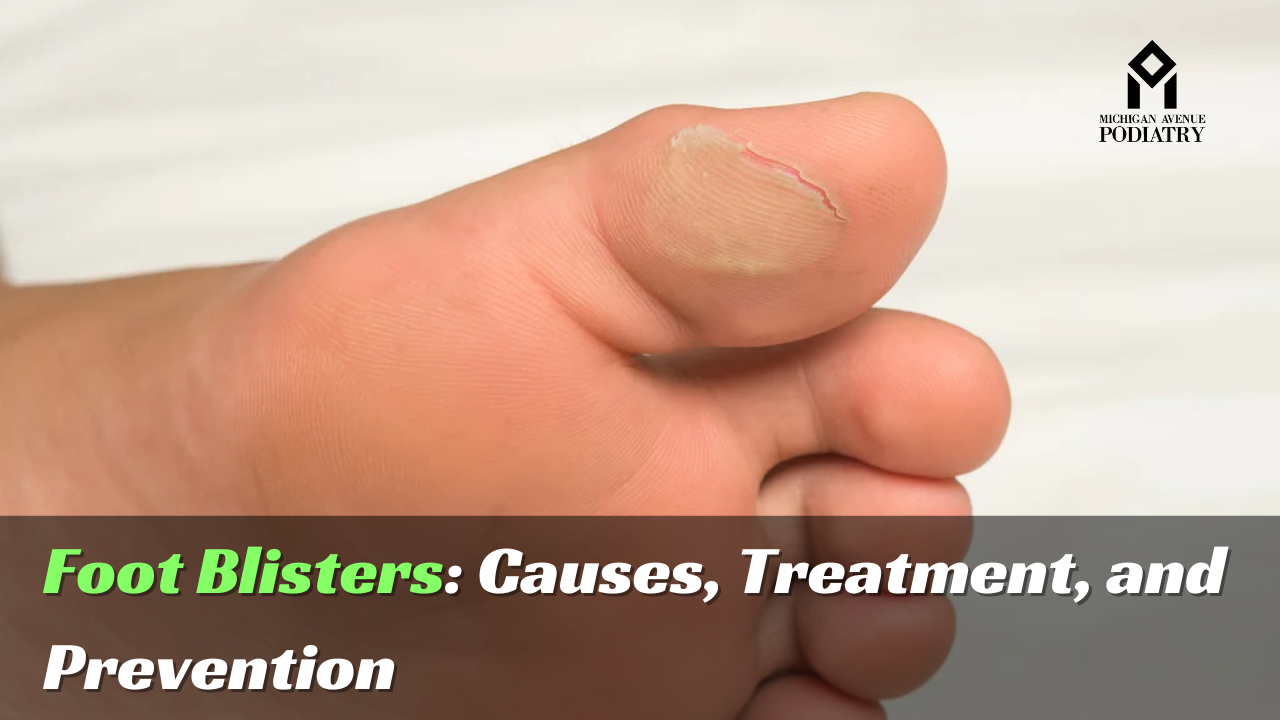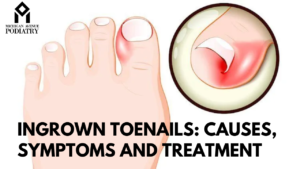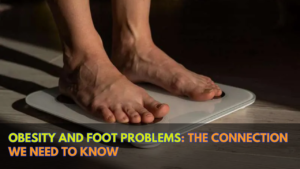Foot blisters are a common occurrence for many people, especially those who are active or spend long hours on their feet. While often seen as minor nuisances, foot blisters can cause discomfort and even pain if not properly treated. In this article, we’ll explore the causes of foot blisters, effective treatment options, and strategies for prevention, highlighting the importance of consulting a podiatrist for proper care.
What Causes Foot Blisters?
- Friction: One of the primary causes of foot blisters is friction, which occurs when the skin rubs against socks, shoes, or other surfaces.
- Moisture: Excessive moisture, such as sweat or water, can soften the skin and make it more prone to blister formation.
- Ill-fitting footwear: Shoes that are too tight or loose can create friction and pressure points on the feet, leading to blisters.
- Heat: Prolonged exposure to heat, such as hot weather or sunburn, can also contribute to blister formation.
Treatment Options for Foot Blisters:
- Leave it intact: In most cases, it’s best to leave a blister intact to protect the underlying skin from infection. Simply cover it with a bandage or blister pad.
- Drain the blister: If the blister is large or painful, it may be necessary to carefully drain it to relieve pressure. Clean the area with antiseptic, sterilize a needle with rubbing alcohol, and gently puncture the edge of the blister to let the fluid drain. Do not remove the skin covering the blister.
- Apply an antibiotic ointment: After draining the blister, apply an antibiotic ointment to prevent infection and promote healing.
- Keep it clean and dry: Keep the blister clean and dry to prevent infection. Change bandages regularly and avoid exposing the blister to moisture.
Prevention Strategies:
- Wear proper footwear: Choose shoes that fit well and provide adequate support and cushioning. Avoid shoes that are too tight or loose.
- Use moisture-wicking socks: Moisture-wicking socks can help keep your feet dry and reduce the risk of friction.
- Apply lubricants: Applying a lubricant, such as petroleum jelly or specialized blister prevention products, to areas prone to friction can reduce the risk of blister formation.
- Break-in new shoes gradually: When wearing new shoes, gradually break them in to allow your feet to adjust and prevent friction.
- Keep feet dry: Change socks regularly, especially if your feet tend to sweat excessively. Consider using foot powders or antiperspirants to keep feet dry.
When to See a Podiatrist: While most foot blisters can be treated at home, there are instances where it’s advisable to seek professional care from a podiatrist, including:
- Signs of infection, such as redness, swelling, or pus.
- Recurrent or chronic blisters.
- Blisters that interfere with daily activities or mobility.
Conclusion: Foot blisters are a common occurrence that can be caused by friction, moisture, ill-fitting footwear, and heat. While most blisters can be treated at home with proper care, it’s important to take steps to prevent them from forming in the first place. By wearing proper footwear, keeping feet dry, and using preventive measures such as lubricants, individuals can reduce their risk of developing foot blisters. Additionally, seeking care from a podiatrist can help ensure proper treatment and prevent complications. Remember, taking care of your feet is essential for overall foot health and mobility.



